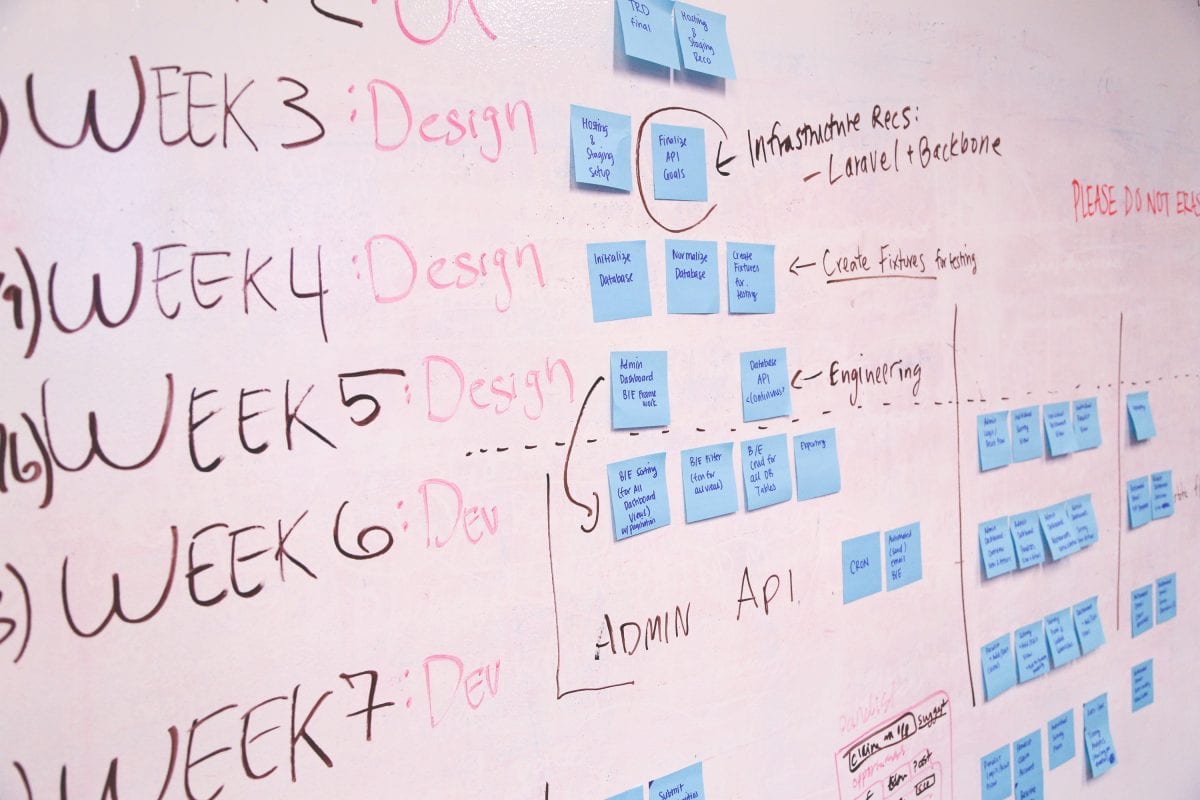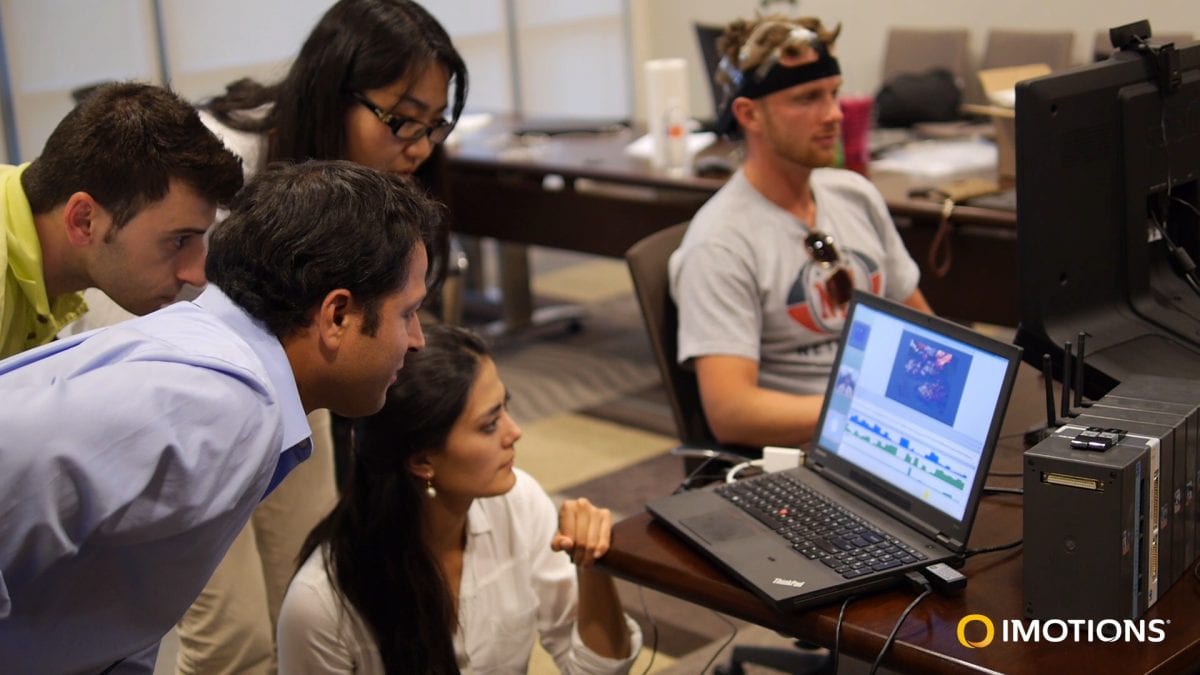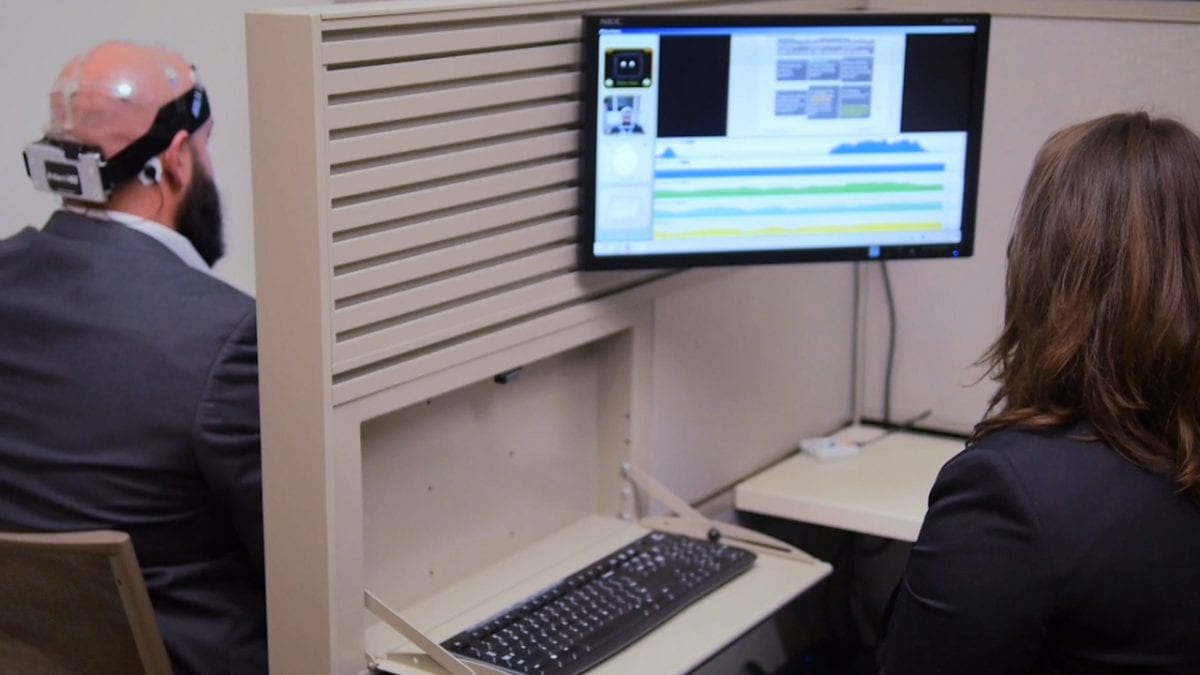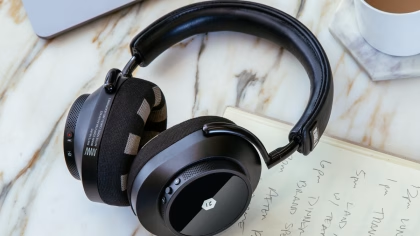New discoveries and advances in science have always followed on the heels of technological breakthroughs – having the best equipment not only allows new ways of looking at things, but often makes it easier to complete as well.
This is seen today in several fields, and particularly within human behavioral research, where a new multi-sensor approach is providing more data to the understanding of how humans experience and interact with the world.
While the singular hardware devices themselves have been tried-and-tested for decades, the integration of these disparate devices into multi-sensor studies is a new approach that provides a more holistic understanding of how we think, feel, and act.
Table of Contents
The next step for research
One of the best ways for a university to increase their human behavior research capacities (which could encompass a wide-range of academic disciplines, from psychology or marketing, to design or user experience, and well beyond), is to build a unified platform for research to flourish. Cutting-edge facilities are popping up worldwide, giving researchers the opportunity to quickly understand humans in new and more incisive ways.
How to make it happen

To facilitate the opening of new labs, iMotions has helped several institutions by providing guidance, assistance, and technical know-how every step of the way. Having the exact information and knowledge to guide the setup of these labs has resulted in several universities becoming key players in the human behavior research world, some of which we will discuss more below.
Check out Our Expert panel to help you every step of the way!
Of course, it’s always easier said than done to set up a large-scale lab for human behavior testing, and a tremendous amount of work is often required. To make this process that little bit easier, we’ve put together some advice to help you get started.
Step 1. Set your research question

Before you begin, it’s of course crucial to know what you want to test, and how you want to test it. For human behavior research, the flexibility and portability of the tools allows investigations to be centered around a huge amount of subjects – from neuropsychological testing, to market research, group interaction, and beyond.
Often with human behavior research, the only limit is the tools at your disposal – underlining the importance of creating a large experimental space. Once you have your research question, you can begin to design the experiment in proper detail (and of course, we have a guide for that), and search for the tools you need to answer those questions.
Step 2. Know your equipment

From your research question, you should know what needs to be tested, so defining the equipment from this shouldn’t present too much of a challenge. If you want to test brain activity, then EEG will suit you best, while emotional response is best covered by facial expression analysis. Tests of physiological arousal are closely tracked by GSR, or ECG devices. There are more possibilities than this, and precisely how you measure things will depend on your exact research question.
Check out: What Is ECG and How Does It Work?
Step 3. Collaborate!
Strength lies in numbers – by forming connections and collaborations across departments and universities, you will be able to strengthen both the design and execution of your research. Having multiple people contributing ideas, knowledge, and possibly even equipment means that you’re more likely to complete your research goals.
This can be achieved in multiple ways – through collaborations and through hiring staff. This latter point is a topic that is worthy of a blog post in and of itself, but get in touch if you would like our guidance and advice on this matter.
Having multiple experts in a particular metric (EEG, for example), means that dealing with the details and troubleshooting is more likely to complete successfully. But above all, one thing that strong collaboration helps the most with is the next step.
Step 4. Secure funding

his is perhaps the most important and difficult step of the process, yet one that requires each of the prior actions, at least to some degree. With principal investigators spending 116 hours on average on each proposal, this can take some time. With the number of applications sent in being correlated to the amount of success, it can however just be a matter of perseverance!
By applying with collaborators (and giving our guide a good read), you increase the chances of finding success (and quite likely reduce the workload of the application too).
With a clear research question, properly defined equipment needs, a strong collaboration, and a persevering approach to funding, you’re on the right path to setting up your very own large-scale behavioral investigations lab. There are just a few more crucial components needed before you can start carrying out your research.
Step 5. Setting up the lab space
The next step is to set up the actual space where your experiments will be carried out. This is a topic that we have covered in some detail before, but the main points boil down to having a quiet, private space with the biosensor equipment set up well in advance of any experiments. Planning and preparation will be key to establishing the space that is needed for carrying out clean and consistent experiments.
You will need to consider the lighting, the location, the electrical components, the sound, and even the furniture to ensure an optimal research environment. All of this is relatively straightforward but does require forethought, time, and budget to get started.
Step 6. Data handling and collection
Before you start collecting data, there is one final thing to consider – how the data will be stored and treated. There are various different rules and regulations regarding data storage depending on which part of the world you are in. This can be particularly sensitive when collecting sensitive data.
Facial expression analysis data featuring recordings of people’s faces is something to consider in particular as it features identifiable information – you may be required to only collect the raw data (and not the actual recordings), or provide safeguards for protecting the information.
There may further be considerations to make depending on how the data is stored – cloud-based storage offers many advantages, but might not offer sufficient protections. It’s worthwhile looking up the legal aspect of data security and privacy for the country you’ll be carrying out the experiments in before beginning.
Step 7. Begin research

Surely the most enjoyable step. With the funding secured, your collaborators happy, and experiments planned, the only thing left to do is to make the most of it and carry out your ground-breaking research. Publishing and continued collaboration across different departments and universities will empower you to expand evermore.
Feeling ready to get going with your research? Read on to find out about two new labs that have cemented their position as research leaders, by developing new facilities for biosensor-based research with the help of iMotions.
Read more about: 7 Tips & Tricks For a Smooth Lab Experience
Case Studies of the Best Lab Set up
Luleå University of Technology, Sweden
North of the Arctic Circle, Luleå University opened a new chapter of research with their inauguration of the DEPICT lab – a cutting-edge research facility devoted to increasing investigations into human experiences within technology development, health, marketing, and more. Using both the platform and direct help from iMotions, Luleå University places itself as a leader in human behavior research.

Camilla Grane, Bjarne Bergquist, and Peter Törlind have led the new endeavor, setting up the interdisciplinary lab space to not only increase the reach of their own work, but also of others, by encouraging other researchers to take advantage of the equipment and setup.
Within the DEPICT lab, experiments are now possible with biosensors to measure brain activity (with EEG), attention (with eye tracking), emotions (with facial expression analysis), and physiological arousal (with ECG and GSR measurements). Each sensor provides a new and different layer of data for investigation.

With the use of biosensors, Peter Törling is advancing the understanding of group decision-making, brainstorming, and how to encourage effective creativity within such settings. Bjarne Bergquist and Camilla Grane examine the tools we use them in separate and distinct ways, but both seek to ultimately improve them – with railways systems, and driving respectively (among other scenarios).
The lab was inaugurated on the 24th of April, 2017, drawing interest and attention from multiple academic departments that are keen to see how human behavior research can help augment and advance the work within their own fields.

Texas A&M University, USA
At the beginning of March, Texas A&M started its new venture into deeper interrogations of human behavior, with its Human Behavior Lab. By using and combining a range of biosensors, the researchers aim to “catapult Texas A&M social sciences forward.” By using iMotions they are now able to carry out research that wasn’t possible before and to take on new challenges in the field of human behavior research.

As director of the lab, Dr. Marco A. Palma has led the efforts to bring cutting-edge human behavior research to the Lone Star State. Research into decision-making processes is at the heart of the efforts in the understanding of human behavior, with key fields of interest ranging from agricultural economics and marketing to computer science, and political science.

The approach of human behavior research allows insight into many fields, as reflected by the diversity of the associated subjects. By having a central hub to associate with, the research capacities of many departments is quickly and readily amplified.
University of Nebraska, Omaha, USA
At the Jack & Stephanie Koraleski Commerce and Applied Behavioral Laboratory, established in October 2014, researchers have been engaging in multimodal research. With research topics spanning studies of entrepreneurial insight, to complex problem-solving, and investigations of social media for extremist propaganda, the scientists at Omaha have been uncovering complex questions related to human behavior.

With the help of iMotions, the University of Nebraska now carries out research with a range of biosensors, allowing the researchers to peer deeper into the underlying neurophysiological factors that determine thoughts and decisions.

By using a multimodal approach, the researchers have set themselves apart, noting how the “combination of technologies is rare among business schools.” By providing access to academic researchers, commercial business, and the nonprofit community, they have brought together a wide range of partners to collaborate and co-operate with. Watch the video below to see more about the lab opening, and the primary research interests.
I hope you’ve enjoyed reading about how to develop your own research lab, and some examples of this already in action. To get inspired and learn more, download our guide to human behavior research – a free, huge, comprehensive guide available below.
Free 52-page Human Behavior Guide
For Beginners and Intermediates
- Get accessible and comprehensive walkthrough
- Valuable human behavior research insight
- Learn how to take your research to the next level

Let’s talk!
Schedule a free demo or get a quote to discover how our software and hardware solutions can support your research.











